
List of wars 1000–1499
Encyclopedia
1000–1099
| Start | Finish | Name of Conflict | Belligerents | |
|---|---|---|---|---|
| Victorious party (if applicable) | Defeated party (if applicable) | |||
| 1010 | 1011 | Second Goryeo–Khitan War Second Goryeo–Khitan War The Second Goryeo-Khitan War was an 11th-century conflict between the kingdom of Goryeo and Khitan forces near what is now the border between China and North Korea. It was the second of the Goryeo-Khitan Wars, with the First Goryeo-Khitan War occurring in 993, the second in 1010, and the third in... |
 Goryeo GoryeoGoryeo The Goryeo Dynasty or Koryŏ was a Korean dynasty established in 918 by Emperor Taejo. Korea gets its name from this kingdom which came to be pronounced Korea. It united the Later Three Kingdoms in 936 and ruled most of the Korean peninsula until it was removed by the Joseon dynasty in 1392... |
_001.jpg) Liao Dynasty Liao DynastyLiao Dynasty The Liao Dynasty , also known as the Khitan Empire was an empire in East Asia that ruled over the regions of Manchuria, Mongolia, and parts of northern China proper between 9071125... |
| 1014 | 1014 | Battle of Clontarf Battle of Clontarf The Battle of Clontarf took place on 23 April 1014 between the forces of Brian Boru and the forces led by the King of Leinster, Máel Mórda mac Murchada: composed mainly of his own men, Viking mercenaries from Dublin and the Orkney Islands led by his cousin Sigtrygg, as well as the one rebellious... |
 Munster Munster |
 Leinster Leinster Dublin Dublin |
| 1015 | 1016 | Cnut the Great's conquest of England |  Denmark Denmark Poland Poland |
|
| 1018 | 1018 | Boleslaw I's intervention in the Kievan succession crisis, 1018 | Kievan Rus' allied to Poland and Hungary Kingdom of Hungary The Kingdom of Hungary comprised present-day Hungary, Slovakia and Croatia , Transylvania , Carpatho Ruthenia , Vojvodina , Burgenland , and other smaller territories surrounding present-day Hungary's borders... |
Kievan Rus' allied to Yaroslav I Yaroslav I the Wise Yaroslav I, Grand Prince of Rus, known as Yaroslav the Wise Yaroslav I, Grand Prince of Rus, known as Yaroslav the Wise Yaroslav I, Grand Prince of Rus, known as Yaroslav the Wise (Old Norse: Jarizleifr; ; Old East Slavic and Russian: Ярослав Мудрый; Ukrainian: Ярослав Мудрий; c... |
| 1018 | 1019 | Third Goryeo–Khitan War |  Goryeo GoryeoGoryeo The Goryeo Dynasty or Koryŏ was a Korean dynasty established in 918 by Emperor Taejo. Korea gets its name from this kingdom which came to be pronounced Korea. It united the Later Three Kingdoms in 936 and ruled most of the Korean peninsula until it was removed by the Joseon dynasty in 1392... |
_001.jpg) Liao Dynasty Liao DynastyLiao Dynasty The Liao Dynasty , also known as the Khitan Empire was an empire in East Asia that ruled over the regions of Manchuria, Mongolia, and parts of northern China proper between 9071125... |
| 1019 | 1019 | Toi Invasion Toi invasion The Toi invasion was the invasion of northern Kyūshū by Jurchen pirates in 1019. Toi meant barbarian in the Korean language at the time.... |
 Goryeo GoryeoGoryeo The Goryeo Dynasty or Koryŏ was a Korean dynasty established in 918 by Emperor Taejo. Korea gets its name from this kingdom which came to be pronounced Korea. It united the Later Three Kingdoms in 936 and ruled most of the Korean peninsula until it was removed by the Joseon dynasty in 1392...  Kyushu KyushuKyushu is the third largest island of Japan and most southwesterly of its four main islands. Its alternate ancient names include , , and . The historical regional name is referred to Kyushu and its surrounding islands.... |
 Toi Pirates Toi Pirates |
| 1030 | 1030 | Battle of Stiklestad Battle of Stiklestad The Battle of Stiklestad in 1030 is one of the most famous battles in the history of Norway. In this battle, King Olaf II of Norway was killed. He was later canonized... |
Peasant Army |  Norway Norway |
| 1043 | 1043 | Rus'–Byzantine War (1043) |  Byzantine Empire Byzantine Empire |
 Kievan Rus' Kievan Rus'Kievan Rus' Kievan Rus was a medieval polity in Eastern Europe, from the late 9th to the mid 13th century, when it disintegrated under the pressure of the Mongol invasion of 1237–1240.... |
| 1048 | 1308 | Byzantine–Seljuq Wars | Great Seljuq Empire Great Seljuq Empire The Great Seljuq Empire was a medieval Persianate, Turko-Persian Sunni Muslim empire, originating from the Qynyq branch of Oghuz Turks. The Seljuq Empire controlled a vast area stretching from the Hindu Kush to eastern Anatolia and from Central Asia to the Persian Gulf... |
 Byzantine Empire Byzantine Empire Crusader States Crusader StatesCrusader states The Crusader states were a number of mostly 12th- and 13th-century feudal states created by Western European crusaders in Asia Minor, Greece and the Holy Land , and during the Northern Crusades in the eastern Baltic area... |
| 1051 | 1063 | Zenkunen War Zenkunen War The Zenkunen War , also known by the English translation Early Nine-Years War, was fought from 1051 to 1063, in Japan's Mutsu province, at the far north of the main island of Honshū... |
 Japan JapanHeian period The is the last division of classical Japanese history, running from 794 to 1185. The period is named after the capital city of Heian-kyō, or modern Kyōto. It is the period in Japanese history when Buddhism, Taoism and other Chinese influences were at their height... |
Abe clan Abe clan The was one of the oldest of the major Japanese clans ; and the clan retained its prominence during the Sengoku period and the Edo period. The clan's origin is said to be one of the original clans of the Yamato people; they truly gained prominence during the Heian period , and experienced a... |
| 1065 | 1067 | War of the Three Sanchos War of the Three Sanchos The War of the Three Sanchos was a brief military conflict between three Spanish kingdoms in 1065–1067. The kingdoms were all ruled by kings who were first cousins: Sancho II the Strong, King of Castile; Sancho IV Garcés, King of Navarre; and Sancho Ramírez, King of Aragon, all grandsons of... |
 Kingdom of Castile Kingdom of CastileKingdom of Castile Kingdom of Castile was one of the medieval kingdoms of the Iberian Peninsula. It emerged as a political autonomous entity in the 9th century. It was called County of Castile and was held in vassalage from the Kingdom of León. Its name comes from the host of castles constructed in the region... |
 Kingdom of Navarre Kingdom of NavarreKingdom of Navarre The Kingdom of Navarre , originally the Kingdom of Pamplona, was a European kingdom which occupied lands on either side of the Pyrenees alongside the Atlantic Ocean....  Kingdom of Aragon Kingdom of AragonKingdom of Aragon The Kingdom of Aragon was a medieval and early modern kingdom in the Iberian Peninsula, corresponding to the modern-day autonomous community of Aragon, in Spain... |
| 1066 | 1088 | Norman conquest of England Norman conquest of England The Norman conquest of England began on 28 September 1066 with the invasion of England by William, Duke of Normandy. William became known as William the Conqueror after his victory at the Battle of Hastings on 14 October 1066, defeating King Harold II of England... |
Normandy Normandy Normandy is a geographical region corresponding to the former Duchy of Normandy. It is in France.The continental territory covers 30,627 km² and forms the preponderant part of Normandy and roughly 5% of the territory of France. It is divided for administrative purposes into two régions:... |
 Kingdom of England Kingdom of England |
| 1083(disputed) | 1089(disputed) | Gosannen War Gosannen War The Gosannen War , also known by the English translation Later Three-Year War, was fought during Japan's Heian period in the province of Mutsu at the far north of Japan's main island of Honshū. Though some scholars date the war to the period of 1086 to 1089, others place it a few years earlier,... |
Standstill between the Kiyohara Clan and the Mutsu Province Mutsu Province was an old province of Japan in the area of Fukushima, Miyagi, Iwate and Aomori prefecture and the municipalities of Kazuno and Kosaka in Akita Prefecture... |
|
| 1096 | 1099 | First Crusade First Crusade The First Crusade was a military expedition by Western Christianity to regain the Holy Lands taken in the Muslim conquest of the Levant, ultimately resulting in the recapture of Jerusalem... Part of the Crusades |
Crusaders: Holy Roman Empire Holy Roman Empire Kingdom of England Kingdom of EnglandDuchy of Apulia  Byzantine Empire Byzantine EmpireArmenian Kingdom of Cilicia Armenian Kingdom of Cilicia The Armenian Kingdom of Cilicia , also known as the Cilician Armenia, Kingdom of Cilician Armenia or New Armenia, was an independent principality formed during the High Middle Ages by Armenian refugees fleeing the Seljuk invasion of Armenia... |
Saracen: Great Seljuq Empire Great Seljuq Empire The Great Seljuq Empire was a medieval Persianate, Turko-Persian Sunni Muslim empire, originating from the Qynyq branch of Oghuz Turks. The Seljuq Empire controlled a vast area stretching from the Hindu Kush to eastern Anatolia and from Central Asia to the Persian Gulf... Danishmends Danishmends The Danishmend dynasty was a Turcoman dynasty that ruled in north-central and eastern Anatolia in the 11th and 12th centuries. The centered originally around Sivas, Tokat, and Niksar in central-northeastern Anatolia, they extended as far west as Ankara and Kastamonu for a time, and as far south as...  Fatimid Fatimid Almoravid Dynasty Almoravid DynastyAbbasid Caliphate |
1100-1199
| Start | Finish | Name of Conflict | Belligerents | |
|---|---|---|---|---|
| Victorious party (if applicable) | Defeated party (if applicable) | |||
| Summer of 1101 | Summer of 1101 | Crusade of 1101 Crusade of 1101 The Crusade of 1101 was a minor crusade of three separate movements, organized in 1100 and 1101 in the successful aftermath of the First Crusade. It is also called the Crusade of the Faint-Hearted due to the number of participants who joined this crusade after having turned back from the First... Part of the Crusades |
Great Seljuq Empire Great Seljuq Empire The Great Seljuq Empire was a medieval Persianate, Turko-Persian Sunni Muslim empire, originating from the Qynyq branch of Oghuz Turks. The Seljuq Empire controlled a vast area stretching from the Hindu Kush to eastern Anatolia and from Central Asia to the Persian Gulf... Danishmends Danishmends The Danishmend dynasty was a Turcoman dynasty that ruled in north-central and eastern Anatolia in the 11th and 12th centuries. The centered originally around Sivas, Tokat, and Niksar in central-northeastern Anatolia, they extended as far west as Ankara and Kastamonu for a time, and as far south as...  Fatimid Fatimid |
 Holy Roman Empire Holy Roman Empire Kingdom of England Kingdom of EnglandDuchy of Apulia  Byzantine Empire Byzantine EmpireArmenian Kingdom of Cilicia Armenian Kingdom of Cilicia The Armenian Kingdom of Cilicia , also known as the Cilician Armenia, Kingdom of Cilician Armenia or New Armenia, was an independent principality formed during the High Middle Ages by Armenian refugees fleeing the Seljuk invasion of Armenia... |
| 1145 | 1149 | Second Crusade Second Crusade The Second Crusade was the second major crusade launched from Europe. The Second Crusade was started in response to the fall of the County of Edessa the previous year to the forces of Zengi. The county had been founded during the First Crusade by Baldwin of Boulogne in 1098... Part of the Crusades |
Saracen: Sultanate of Rûm Sultanate of Rûm The Sultanate of Rum , also known as the Anatolian Seljuk State , was a Turkic state centered in in Anatolia, with capitals first at İznik and then at Konya. Since the court of the sultanate was highly mobile, cities like Kayseri and Sivas also functioned at times as capitals...  Almoravid Dynasty Almoravid DynastyZengid Dynasty Zengid dynasty The Zengid dynasty was a Muslim dynasty of Turkic origin, which ruled parts of Syria and northern Iraq on behalf of the Seljuk Empire.-History:... Abbasid Caliphate  Fatimid FatimidKingdom of Sicily Kingdom of Sicily The Kingdom of Sicily was a state that existed in the south of Italy from its founding by Roger II in 1130 until 1816. It was a successor state of the County of Sicily, which had been founded in 1071 during the Norman conquest of southern Italy... |
Crusaders: Kingdom of Jerusalem Kingdom of JerusalemKingdom of Jerusalem The Kingdom of Jerusalem was a Catholic kingdom established in the Levant in 1099 after the First Crusade. The kingdom lasted nearly two hundred years, from 1099 until 1291 when the last remaining possession, Acre, was destroyed by the Mamluks, but its history is divided into two distinct periods....  Holy Roman Empire Holy Roman Empire Kingdom of Castile Kingdom of CastileKingdom of Castile Kingdom of Castile was one of the medieval kingdoms of the Iberian Peninsula. It emerged as a political autonomous entity in the 9th century. It was called County of Castile and was held in vassalage from the Kingdom of León. Its name comes from the host of castles constructed in the region...  County of Barcelona County of Barcelona Kingdom of León Kingdom of LeónKingdom of León The Kingdom of León was an independent kingdom situated in the northwest region of the Iberian Peninsula. It was founded in AD 910 when the Christian princes of Asturias along the northern coast of the peninsula shifted their capital from Oviedo to the city of León...  Byzantine Empire Byzantine Empire Kingdom of England Kingdom of England |
| 1147 | 1242 | Northern Crusades Northern Crusades The Northern Crusades or Baltic Crusades were crusades undertaken by the Christian kings of Denmark and Sweden, the German Livonian and Teutonic military orders, and their allies against the pagan peoples of Northern Europe around the southern and eastern shores of the Baltic Sea... Part of the Crusades |
 Kingdom of Denmark Kingdom of Denmark Sword-Brothers Sword-Brothers Livonian Order Livonian OrderLivonian Order The Livonian Order was an autonomous Livonian branch of the Teutonic Order and a member of the Livonian Confederation from 1435–1561. After being defeated by Samogitians in the 1236 Battle of Schaulen , the remnants of the Livonian Brothers of the Sword were incorporated into the Teutonic Knights... |
Baltic Pagans, especially Estonians and Finns |
| 1156 | 1156 | Hōgen Rebellion Hogen Rebellion The was a short civil war fought in order to resolve a dispute about Japanese Imperial succession. The dispute was also about the degree of control exercised by the Fujiwara clan who had become hereditary Imperial regents during the Heian period.... |
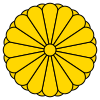 Emperor Go-Shirakawa Emperor Go-ShirakawaEmperor Go-Shirakawa Emperor Go-Shirakawa was the 77th emperor of Japan, according to the traditional order of succession... |
 Emperor Sutoku Emperor SutokuEmperor Sutoku was the 75th emperor of Japan, according to the traditional order of succession.Sutoku's reign spanned the years from 1123 through 1142.-Genealogy:Before his ascension to the Chrysanthemum Throne, his personal name was Akihito .... |
| 1160 | 1160 | Heiji Rebellion Heiji Rebellion The was a short civil war fought in order to resolve a dispute about political power. The Heiji no ran encompassed clashes between rival subjects of the cloistered Emperor Go-Shirakawa of Japan in 1159. It was preceded by the Hōgen Rebellion in 1156... |
 Taira clan Taira clanTaira clan The was a major Japanese clan of samurai in historical Japan.In reference to Japanese history, along with Minamoto, Taira was a hereditary clan name bestowed by the emperors of the Heian Period to certain ex-members of the imperial family when they became subjects... |
 Minamoto clan Minamoto clanMinamoto clan was one of the surnames bestowed by the Emperors of Japan upon members of the imperial family who were demoted into the ranks of the nobility. The practice was most prevalent during the Heian Period , although its last occurrence was during the Sengoku Era. The Taira were another such offshoot of... |
| 1169 | 1175 | Norman invasion of Ireland Norman Invasion of Ireland The Norman invasion of Ireland was a two-stage process, which began on 1 May 1169 when a force of loosely associated Norman knights landed near Bannow, County Wexford... |
Normandy Normandy Normandy is a geographical region corresponding to the former Duchy of Normandy. It is in France.The continental territory covers 30,627 km² and forms the preponderant part of Normandy and roughly 5% of the territory of France. It is divided for administrative purposes into two régions:... |
 Ulster Ulster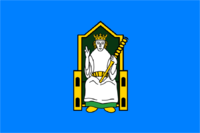 Mide MideKingdom of Mide Mide , spelt Midhe in modern Irish and anglicised as Meath, was a medieval kingdom in Ireland for over 1,000 years. Its name means "middle", denoting the fact that lay in the middle of Ireland....  Leinster Leinster Munster Munster Connacht Connacht |
| 1180 | 1185 | Genpei War Genpei War The was a conflict between the Taira and Minamoto clans during the late-Heian period of Japan. It resulted in the fall of the Taira clan and the establishment of the Kamakura shogunate under Minamoto Yoritomo in 1192.... |
 Minamoto clan Minamoto clanMinamoto clan was one of the surnames bestowed by the Emperors of Japan upon members of the imperial family who were demoted into the ranks of the nobility. The practice was most prevalent during the Heian Period , although its last occurrence was during the Sengoku Era. The Taira were another such offshoot of... |
 Taira clan Taira clanTaira clan The was a major Japanese clan of samurai in historical Japan.In reference to Japanese history, along with Minamoto, Taira was a hereditary clan name bestowed by the emperors of the Heian Period to certain ex-members of the imperial family when they became subjects... |
| 1185 | 1204 | Uprising of Asen and Peter |  Bulgarian Empire Bulgarian EmpireBulgarian Empire Bulgarian Empire is a term used to describe two periods in the medieval history of Bulgaria, during which it acted as a key regional power in Europe in general and in Southeastern Europe in particular, rivalling Byzantium... |
 Byzantine Empire Byzantine Empire |
| 1189 | 1192 | Third Crusade Third Crusade The Third Crusade , also known as the Kings' Crusade, was an attempt by European leaders to reconquer the Holy Land from Saladin... Part of the Crusades |
Crusaders: Kingdom of Jerusalem Kingdom of JerusalemKingdom of Jerusalem The Kingdom of Jerusalem was a Catholic kingdom established in the Levant in 1099 after the First Crusade. The kingdom lasted nearly two hundred years, from 1099 until 1291 when the last remaining possession, Acre, was destroyed by the Mamluks, but its history is divided into two distinct periods....  Kingdom of England Kingdom of England Holy Roman Empire Holy Roman Empire |
Saracen: Ayyubid Dynasty Ayyubid DynastyAyyubid dynasty The Ayyubid dynasty was a Muslim dynasty of Kurdish origin, founded by Saladin and centered in Egypt. The dynasty ruled much of the Middle East during the 12th and 13th centuries CE. The Ayyubid family, under the brothers Ayyub and Shirkuh, originally served as soldiers for the Zengids until they... Zengid Dynasty Zengid dynasty The Zengid dynasty was a Muslim dynasty of Turkic origin, which ruled parts of Syria and northern Iraq on behalf of the Seljuk Empire.-History:...  Byzantine Empire Byzantine EmpireKingdom of Sicily Kingdom of Sicily The Kingdom of Sicily was a state that existed in the south of Italy from its founding by Roger II in 1130 until 1816. It was a successor state of the County of Sicily, which had been founded in 1071 during the Norman conquest of southern Italy... |
1200-1299
| Start | Finish | Name of Conflict | Belligerents | |
|---|---|---|---|---|
| Victorious party (if applicable) | Defeated party (if applicable) | |||
| 1202 | 1204 | Fourth Crusade Fourth Crusade The Fourth Crusade was originally intended to conquer Muslim-controlled Jerusalem by means of an invasion through Egypt. Instead, in April 1204, the Crusaders of Western Europe invaded and conquered the Christian city of Constantinople, capital of the Eastern Roman Empire... Part of the Crusades Crusades The Crusades were a series of religious wars, blessed by the Pope and the Catholic Church with the main goal of restoring Christian access to the holy places in and near Jerusalem... |
Crusaders: Holy Roman Empire Holy Roman Empire Republic of Venice Republic of Venice Monferrat Monferrat |
 Byzantine Empire Byzantine Empire |
| 1206 | 1324 | Mongol conquests Mongol Conquests Mongol invasions progressed throughout the 13th century, resulting in the vast Mongol Empire which covered much of Asia and Eastern Europe by 1300.... |
 Mongol Empire Mongol EmpireMongol Empire The Mongol Empire , initially named as Greater Mongol State was a great empire during the 13th and 14th centuries... |
夏 Western Xia Western Xia The Western Xia Dynasty or the Tangut Empire, was known to the Tanguts and the Tibetans as Minyak.The state existed from 1038 to 1227 AD in what are now the northwestern Chinese provinces of Ningxia, Gansu, eastern Qinghai, northern Shaanxi, northeastern Xinjiang, southwest Inner Mongolia, and... 金 Jin Dynasty  Manchuria ManchuriaManchuria Manchuria is a historical name given to a large geographic region in northeast Asia. Depending on the definition of its extent, Manchuria usually falls entirely within the People's Republic of China, or is sometimes divided between China and Russia. The region is commonly referred to as Northeast... 大理國 Dali Kingdom Khwarizmian Empire Kara-Khitan Khanate Kara-Khitan Khanate The Kara-Khitan Khanate, or Western Liao was a Khitan empire in Central Asia. The dynasty was founded by Yelü Dashi, who led the remnants of the Liao Dynasty to Central Asia after fleeing from the Jurchen conquest of their homeland in North and Northeast of modern day China... 宋 Song Dynasty Song Dynasty The Song Dynasty was a ruling dynasty in China between 960 and 1279; it succeeded the Five Dynasties and Ten Kingdoms Period, and was followed by the Yuan Dynasty. It was the first government in world history to issue banknotes or paper money, and the first Chinese government to establish a...  Kievan Rus' Kievan Rus'Kievan Rus' Kievan Rus was a medieval polity in Eastern Europe, from the late 9th to the mid 13th century, when it disintegrated under the pressure of the Mongol invasion of 1237–1240....  Byzantine Empire Byzantine Empire Kingdom of Poland Kingdom of Poland Kingdom of Hungary Kingdom of HungaryKingdom of Hungary The Kingdom of Hungary comprised present-day Hungary, Slovakia and Croatia , Transylvania , Carpatho Ruthenia , Vojvodina , Burgenland , and other smaller territories surrounding present-day Hungary's borders... Kingdom of Croatia Kingdom of Croatia (medieval) The Kingdom of Croatia , also known as the Kingdom of the Croats , was a medieval kingdom covering most of what is today Croatia and Bosnia and Herzegovina in the Balkans.Established in 925, it ruled as a sovereign state for almost two centuries...  Kingdom of Serbia Kingdom of Serbia Bulgarian Empire Bulgarian EmpireSecond Bulgarian Empire The Second Bulgarian Empire was a medieval Bulgarian state which existed between 1185 and 1396 . A successor of the First Bulgarian Empire, it reached the peak of its power under Kaloyan and Ivan Asen II before gradually being conquered by the Ottomans in the late 14th-early 15th century... Sultanate of Rûm Sultanate of Rûm The Sultanate of Rum , also known as the Anatolian Seljuk State , was a Turkic state centered in in Anatolia, with capitals first at İznik and then at Konya. Since the court of the sultanate was highly mobile, cities like Kayseri and Sivas also functioned at times as capitals...  Empire of Trebizond Empire of TrebizondEmpire of Trebizond The Empire of Trebizond, founded in April 1204, was one of three Byzantine successor states of the Byzantine Empire. However, the creation of the Empire of Trebizond was not directly related to the capture of Constantinople by the Fourth Crusade, rather it had broken away from the Byzantine Empire...  Crusader states Crusader statesCrusader states The Crusader states were a number of mostly 12th- and 13th-century feudal states created by Western European crusaders in Asia Minor, Greece and the Holy Land , and during the Northern Crusades in the eastern Baltic area... Đại Việt .svg.png) Sukhothai Kingdom Sukhothai KingdomSukhothai kingdom The Sukhothai Kingdom ) was an early kingdom in the area around the city Sukhothai, in north central Thailand. The Kingdom existed from 1238 till 1438...  Mamluk Sultanate Mamluk SultanateMamluk Sultanate (Cairo) The Mamluk Sultanate of Egypt was the final independent Egyptian state prior to the establishment of the Muhammad Ali Dynasty in 1805. It lasted from the overthrow of the Ayyubid Dynasty until the Ottoman conquest of Egypt in 1517. The sultanate's ruling caste was composed of Mamluks, Arabised... Abbasid Caliphate  Goryeo GoryeoGoryeo The Goryeo Dynasty or Koryŏ was a Korean dynasty established in 918 by Emperor Taejo. Korea gets its name from this kingdom which came to be pronounced Korea. It united the Later Three Kingdoms in 936 and ruled most of the Korean peninsula until it was removed by the Joseon dynasty in 1392...  Japan JapanPagan Kingdom Pagan Kingdom The Pagan Kingdom or Pagan Dynasty was the first kingdom to unify the regions that would later constitute the modern-day Burma... Chăm Pa Singhasari Singhasari Singhasari was a kingdom located in east Java between 1222 and 1292. The kingdom succeeded Kingdom of Kediri as the dominant kingdom in eastern Java.-Foundation:... |
| 1208 | 1227 | Livonian Crusade Livonian Crusade The Livonian Crusade refers to the German and Danish conquest and colonization of medieval Livonia, the territory constituting modern Latvia and Estonia, during the Northern Crusades... Part of the Crusades |
Crusaders: Sword-Brothers Sword-Brothers Livonian Order Livonian OrderLivonian Order The Livonian Order was an autonomous Livonian branch of the Teutonic Order and a member of the Livonian Confederation from 1435–1561. After being defeated by Samogitians in the 1236 Battle of Schaulen , the remnants of the Livonian Brothers of the Sword were incorporated into the Teutonic Knights...  Kingdom of Denmark Kingdom of Denmark |
Indigenous Baltic and Finno-Ugric peoples, especially Latgalians Latgalians The term Latgalians The term Latgalians The term Latgalians (Latgalian: latgalīši, latgali, (also spelt Latgallians and sometimes known as Lettigalls, Latgolans, or Lettigallians) can refer to the inhabitants of the Latgale region in eastern Latvia in general, the ethnic Latvians of Latgale... , Estonians Estonians Estonians are a Finnic people closely related to the Finns and inhabiting, primarily, the country of Estonia. They speak a Finnic language known as Estonian... and Livonians |
| 1209 | 1229 | Albigensian Crusade Albigensian Crusade The Albigensian Crusade or Cathar Crusade was a 20-year military campaign initiated by the Catholic Church to eliminate Catharism in Languedoc... Part of the Crusades |
Crusaders: |
Cathars: Counts of Toulouse Counts of ToulouseCounts of Toulouse The first Counts of Toulouse were the administrators of the city and its environs under the Merovingians. No succession of such royal appointees is known, though a few names survive to the present...  Kingdom of Aragon Kingdom of AragonKingdom of Aragon The Kingdom of Aragon was a medieval and early modern kingdom in the Iberian Peninsula, corresponding to the modern-day autonomous community of Aragon, in Spain... |
| 1213 | 1221 | Fifth Crusade Fifth Crusade The Fifth Crusade was an attempt to reacquire Jerusalem and the rest of the Holy Land by first conquering the powerful Ayyubid state in Egypt.... Part of the Crusades |
Egyptians: Ayyubid Dynasty Ayyubid DynastyAyyubid dynasty The Ayyubid dynasty was a Muslim dynasty of Kurdish origin, founded by Saladin and centered in Egypt. The dynasty ruled much of the Middle East during the 12th and 13th centuries CE. The Ayyubid family, under the brothers Ayyub and Shirkuh, originally served as soldiers for the Zengids until they... |
Crusaders: Latin Empire of Constantinople Latin Empire of Constantinople Kingdom of Cyprus Kingdom of CyprusKingdom of Cyprus The Kingdom of Cyprus was a Crusader kingdom on the island of Cyprus in the high and late Middle Ages, between 1192 and 1489. It was ruled by the French House of Lusignan.-History:... Sultanate of Rûm Sultanate of Rûm The Sultanate of Rum , also known as the Anatolian Seljuk State , was a Turkic state centered in in Anatolia, with capitals first at İznik and then at Konya. Since the court of the sultanate was highly mobile, cities like Kayseri and Sivas also functioned at times as capitals...  Holy Roman Empire Holy Roman Empire Archduchy of Austria Archduchy of AustriaArchduchy of Austria The Archduchy of Austria , one of the most important states within the Holy Roman Empire, was the nucleus of the Habsburg Monarchy and the predecessor of the Austrian Empire...  Knights Templar Knights TemplarKnights Templar The Poor Fellow-Soldiers of Christ and of the Temple of Solomon , commonly known as the Knights Templar, the Order of the Temple or simply as Templars, were among the most famous of the Western Christian military orders... 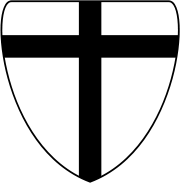 Teutonic Knights Teutonic KnightsTeutonic Knights The Order of Brothers of the German House of Saint Mary in Jerusalem , commonly the Teutonic Order , is a German medieval military order, in modern times a purely religious Catholic order... Knights Hospitaller Knights Hospitaller The Sovereign Military Hospitaller Order of Saint John of Jerusalem of Rhodes and of Malta , also known as the Sovereign Military Order of Malta , Order of Malta or Knights of Malta, is a Roman Catholic lay religious order, traditionally of military, chivalrous, noble nature. It is the world's...  Kingdom of Hungary Kingdom of HungaryKingdom of Hungary in the Middle Ages The Kingdom of Hungary was formed from the previous Principality of Hungarywith the coronation of Stephen I in AD 1000. This was a result of the conversion of Géza of Hungary to the Western Church in the 970s.... 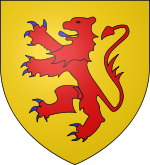 County of Holland County of HollandCounty of Holland The County of Holland was a county in the Holy Roman Empire and from 1482 part of the Habsburg Netherlands in what is now the Netherlands. It covered an area roughly corresponding to the current Dutch provinces of North-Holland and South-Holland, as well as the islands of Terschelling, Vlieland,... .svg.png) Papal States Papal StatesPapal States The Papal State, State of the Church, or Pontifical States were among the major historical states of Italy from roughly the 6th century until the Italian peninsula was unified in 1861 by the Kingdom of Piedmont-Sardinia .The Papal States comprised territories under... |
| 1214 | 1214 | Battle of Bouvines Battle of Bouvines The Battle of Bouvines, 27 July 1214, was a conclusive medieval battle ending the twelve year old Angevin-Flanders War that was important to the early development of both the French state by confirming the French crown's sovereignty over the Angevin lands of Brittany and Normandy.Philip Augustus of... |
 Welfs Welfs Flanders Flanders Kingdom of England Kingdom of England Boulogne BoulogneCount of Boulogne The county of Boulogne was a historical region in the Low Countries. It consisted of a part of the present-day French département of the Pas-de-Calais , in parts of which there is still a Dutch-speaking minority.... |
|
| 1215 | 1217 | First Barons' War First Barons' War The First Barons' War was a civil war in the Kingdom of England, between a group of rebellious barons—led by Robert Fitzwalter and supported by a French army under the future Louis VIII of France—and King John of England... |
 Kingdom of England Kingdom of England |
Rebel Barons Supported by France and Scotland Kingdom of Scotland The Kingdom of Scotland was a Sovereign state in North-West Europe that existed from 843 until 1707. It occupied the northern third of the island of Great Britain and shared a land border to the south with the Kingdom of England... |
| 1228 | 1229 | Sixth Crusade Sixth Crusade The Sixth Crusade started in 1228 as an attempt to regain Jerusalem. It began seven years after the failure of the Fifth Crusade. It involved very little actual fighting... Part of the Crusades |
Crusaders: Holy Roman Empire Holy Roman Empire Teutonic Knights Teutonic KnightsTeutonic Knights The Order of Brothers of the German House of Saint Mary in Jerusalem , commonly the Teutonic Order , is a German medieval military order, in modern times a purely religious Catholic order... |
 Kingdom of Cyprus Kingdom of CyprusKingdom of Cyprus The Kingdom of Cyprus was a Crusader kingdom on the island of Cyprus in the high and late Middle Ages, between 1192 and 1489. It was ruled by the French House of Lusignan.-History:...  Ibelin IbelinIbelin Ibelin was a castle in the Crusader Kingdom of Jerusalem in the 12th century , which gave its name to an important family of nobles.-The castle:...  Ayyubid Dynasty Ayyubid DynastyAyyubid dynasty The Ayyubid dynasty was a Muslim dynasty of Kurdish origin, founded by Saladin and centered in Egypt. The dynasty ruled much of the Middle East during the 12th and 13th centuries CE. The Ayyubid family, under the brothers Ayyub and Shirkuh, originally served as soldiers for the Zengids until they... |
| 1242 | 1249 | First Prussian Uprising | ||
| 1248 | 1254 | Seventh Crusade Seventh Crusade The Seventh Crusade was a crusade led by Louis IX of France from 1248 to 1254. Approximately 800,000 bezants were paid in ransom for King Louis who, along with thousands of his troops, was captured and defeated by the Egyptian army led by the Ayyubid Sultan Turanshah supported by the Bahariyya... Part of the Crusades |
Muslims: Ayyubid Dynasty Ayyubid DynastyAyyubid dynasty The Ayyubid dynasty was a Muslim dynasty of Kurdish origin, founded by Saladin and centered in Egypt. The dynasty ruled much of the Middle East during the 12th and 13th centuries CE. The Ayyubid family, under the brothers Ayyub and Shirkuh, originally served as soldiers for the Zengids until they...  Bahris Bahris |
Crusaders: Knights Templar Knights TemplarKnights Templar The Poor Fellow-Soldiers of Christ and of the Temple of Solomon , commonly known as the Knights Templar, the Order of the Temple or simply as Templars, were among the most famous of the Western Christian military orders... |
| 1260 | 1274 | Great Prussian Uprising | ||
| 1262 | 1262 | Berke–Hulagu war | Golden Horde Golden Horde The Golden Horde was a Mongol and later Turkicized khanate that formed the north-western sector of the Mongol Empire... |
 Ilkhanate IlkhanateIlkhanate The Ilkhanate, also spelled Il-khanate , was a Mongol khanate established in Azerbaijan and Persia in the 13th century, considered a part of the Mongol Empire... |
| 1264 | 1267 | Second Barons' War Second Barons' War The Second Barons' War was a civil war in England between the forces of a number of barons led by Simon de Montfort, against the Royalist forces led by Prince Edward , in the name of Henry III.-Causes:... |
 Pro-Monarchy Forces Pro-Monarchy Forces |
 Anti-Monarchy Barons Anti-Monarchy Barons |
| 1266 | 1266 | Battle of Benevento Battle of Benevento The Battle of Benevento was fought near Benevento, in present-day Southern Italy, on February 26, 1266, between the troops of Charles of Anjou and Manfred of Sicily. Manfred's defeat and death resulted in the capture of the Kingdom of Sicily by Charles.... Part of Guelphs and Ghibellines Guelphs and Ghibellines The Guelphs and Ghibellines were factions supporting the Pope and the Holy Roman Emperor, respectively, in central and northern Italy. During the 12th and 13th centuries, the split between these two parties was a particularly important aspect of the internal policy of the Italian city-states... |
.svg.png) Guelphs Guelphs |
 Ghibellines Ghibellines |
| 1270 | 1270 | Eighth Crusade Eighth Crusade The Eighth Crusade was a crusade launched by Louis IX, King of France, in 1270. The Eighth Crusade is sometimes counted as the Seventh, if the Fifth and Sixth Crusades of Frederick II are counted as a single crusade... Part of the Crusades |
 Hafsids Hafsids |
|
| 1271 | 1272 | Ninth Crusade Ninth Crusade The Ninth Crusade, which is sometimes grouped with the Eighth Crusade, is commonly considered to be the last major medieval Crusade to the Holy Land. It took place in 1271–1272.... Part of the Crusades |
Malmuks: Bahris Bahris |
Crusaders: Anjou Anjou Anjou is a former county , duchy and province centred on the city of Angers in the lower Loire Valley of western France. It corresponds largely to the present-day département of Maine-et-Loire...  Kingdom of Cyprus Kingdom of CyprusKingdom of Cyprus The Kingdom of Cyprus was a Crusader kingdom on the island of Cyprus in the high and late Middle Ages, between 1192 and 1489. It was ruled by the French House of Lusignan.-History:...  Principality of Antioch Principality of AntiochPrincipality of Antioch The Principality of Antioch, including parts of modern-day Turkey and Syria, was one of the crusader states created during the First Crusade.-Foundation:...  Kingdom of England Kingdom of England Ilkhanate IlkhanateIlkhanate The Ilkhanate, also spelled Il-khanate , was a Mongol khanate established in Azerbaijan and Persia in the 13th century, considered a part of the Mongol Empire... |
| 1282 | 1302 | War of the Sicilian Vespers War of the Sicilian Vespers The War of the ' Vespers started with the insurrection of the Sicilian Vespers against Charles of Anjou in 1282 and finally ended with the peace of Caltabellotta in 1302... |
Peace Between: Kingdom of Aragon Kingdom of AragonKingdom of Aragon The Kingdom of Aragon was a medieval and early modern kingdom in the Iberian Peninsula, corresponding to the modern-day autonomous community of Aragon, in Spain... Kingdom of Trinacria |
and: Kingdom of Naples Kingdom of NaplesKingdom of Naples The Kingdom of Naples, comprising the southern part of the Italian peninsula, was the remainder of the old Kingdom of Sicily after secession of the island of Sicily as a result of the Sicilian Vespers rebellion of 1282. Known to contemporaries as the Kingdom of Sicily, it is dubbed Kingdom of...  Kingdom of Majorca Kingdom of MajorcaKingdom of Majorca The Kingdom of Majorca was founded by James I of Aragon, also known as James The Conqueror. After the death of his first-born son Alfonso, a will was written in 1262 which created the kingdom in order to cede it to his son James... |
| 1296 | 1328 | First War of Scottish Independence First War of Scottish Independence The First War of Scottish Independence lasted from the invasion by England in 1296 until the de jure restoration of Scottish independence with the Treaty of Edinburgh-Northampton in 1328... |
 Kingdom of Scotland Kingdom of Scotland |
 Kingdom of England Kingdom of England |
1300-1399
| Start | Finish | Name of Conflict | Belligerents | |
|---|---|---|---|---|
| Victorious party (if applicable) | Defeated party (if applicable) | |||
| 1302 | 1302 | Battle of the Golden Spurs Battle of the Golden Spurs The Battle of the Golden Spurs, known also as the Battle of Courtrai was fought on July 11, 1302, near Kortrijk in Flanders... |
 County of Flanders County of FlandersCounty of Flanders The County of Flanders was one of the territories constituting the Low Countries. The county existed from 862 to 1795. It was one of the original secular fiefs of France and for centuries was one of the most affluent regions in Europe.... |
|
| 1308 | 1308 | Teutonic takeover of Danzig (Gdańsk) Teutonic takeover of Danzig (Gdansk) The city of Danzig was captured by the State of the Teutonic Order on 13 November 1308, resulting in a massacre of its inhabitants and marking the beginning of tensions between Poland and the Teutonic Order. Originally the knights moved into the fortress as an ally of Poland against the... |
 Teutonic Knights Teutonic KnightsTeutonic Knights The Order of Brothers of the German House of Saint Mary in Jerusalem , commonly the Teutonic Order , is a German medieval military order, in modern times a purely religious Catholic order... |
 Margraviate of Brandenburg Margraviate of BrandenburgMargraviate of Brandenburg The Margraviate of Brandenburg was a major principality of the Holy Roman Empire from 1157 to 1806. Also known as the March of Brandenburg , it played a pivotal role in the history of Germany and Central Europe.... |
| 1315 | 1315 | Battle of Morgarten Battle of Morgarten The Battle of Morgarten occurred on November 15, 1315, when a Swiss Confederation force of 1,500 infantry archers ambushed a group of Austrian soldiers of the Holy Roman Empire near the Morgarten Pass... |
Swiss Confederation: Uri Canton of Uri Uri is one of the 26 cantons of Switzerland and a founding member of the Swiss Confederation. It is located in Central Switzerland. The canton's territory covers the valley of the Reuss River between Lake Lucerne and the St. Gotthard Pass. German is the primary language spoken in Uri... Schwyz Schwyz The town of is the capital of the canton of Schwyz in Switzerland.The Federal Charter of 1291 or Bundesbrief, the charter that eventually led to the foundation of Switzerland, can be seen at the Bundesbriefmuseum.-History of the toponym:...  Unterwalden UnterwaldenUnterwalden Unterwalden is the old name of a forest-canton of the Old Swiss Confederacy in central Switzerland, south of Lake Lucerne, consisting of two valleys or Talschaften, now organized as two half-cantons, an upper part, Obwalden, and a lower part, Nidwalden.Unterwalden was one of the three participants... Unterwalden Unterwalden Unterwalden is the old name of a forest-canton of the Old Swiss Confederacy in central Switzerland, south of Lake Lucerne, consisting of two valleys or Talschaften, now organized as two half-cantons, an upper part, Obwalden, and a lower part, Nidwalden.Unterwalden was one of the three participants... |
 Austria Austria |
| 1315 | 1318 | Irish-Bruce Wars (1315-1318) | Lordship of Ireland Lordship of Ireland The Lordship of Ireland refers to that part of Ireland that was under the rule of the king of England, styled Lord of Ireland, between 1177 and 1541. It was created in the wake of the Norman invasion of Ireland in 1169–71 and was succeeded by the Kingdom of Ireland...  Kingdom of England Kingdom of England |
 Kingdom of Scotland Kingdom of Scotland |
| 1321 | 1322 | Swedish–Novgorodian Wars | Peace made between: |
and: Republic of Novgorod |
| 1323 | 1328 | Peasant revolt in Flanders 1323–1328 |  Flanders Flanders |
Peasant Army |
| 1326 | 1332 | Polish–Teutonic War (1326–1332) Polish–Teutonic War (1326–1332) Polish–Teutonic War was the war between the Kingdom of Poland and the State of the Teutonic Order over Pomerelia, fought from 1326 to 1332.-Background:... |
Peace Between: Teutonic Knights Teutonic KnightsTeutonic Knights The Order of Brothers of the German House of Saint Mary in Jerusalem , commonly the Teutonic Order , is a German medieval military order, in modern times a purely religious Catholic order... |
and: Kingdom of Poland Kingdom of Poland |
| 1332 | 1357 | Second War of Scottish Independence Second War of Scottish Independence The Second War of Scottish Independence was the second cluster of a series of military campaigns fought between the independent Kingdom of Scotland and the Kingdom of England in the late thirteenth and early fourteenth centuries.... |
 Kingdom of Scotland Kingdom of Scotland |
 Kingdom of England Kingdom of England |
| 1337 | 1453 | Hundred Years' War Hundred Years' War The Hundred Years' War was a series of separate wars waged from 1337 to 1453 by the House of Valois and the House of Plantagenet, also known as the House of Anjou, for the French throne, which had become vacant upon the extinction of the senior Capetian line of French kings... |
 Crown of Castille Crown of Castille Kingdom of Scotland Kingdom of Scotland Republic of Genoa Republic of GenoaRepublic of Genoa The Most Serene Republic of Genoa |Ligurian]]: Repúbrica de Zêna) was an independent state from 1005 to 1797 in Liguria on the northwestern Italian coast, as well as Corsica from 1347 to 1768, and numerous other territories throughout the Mediterranean....  Kingdom of Majorca Kingdom of MajorcaKingdom of Majorca The Kingdom of Majorca was founded by James I of Aragon, also known as James The Conqueror. After the death of his first-born son Alfonso, a will was written in 1262 which created the kingdom in order to cede it to his son James...  Kingdom of Bohemia Kingdom of BohemiaKingdom of Bohemia The Kingdom of Bohemia was a country located in the region of Bohemia in Central Europe, most of whose territory is currently located in the modern-day Czech Republic. The King was Elector of Holy Roman Empire until its dissolution in 1806, whereupon it became part of the Austrian Empire, and... Crown of Aragon Crown of Aragon The Crown of Aragon Corona d'Aragón Corona d'Aragó Corona Aragonum controlling a large portion of the present-day eastern Spain and southeastern France, as well as some of the major islands and mainland possessions stretching across the Mediterranean as far as Greece... Duchy of Brittany |
Duchy of Burgundy Duchy of Burgundy The Duchy of Burgundy , was heir to an ancient and prestigious reputation and a large division of the lands of the Second Kingdom of Burgundy and in its own right was one of the geographically larger ducal territories in the emergence of Early Modern Europe from Medieval Europe.Even in that...  Aquitaine AquitaineAquitaine Aquitaine , archaic Guyenne/Guienne , is one of the 27 regions of France, in the south-western part of metropolitan France, along the Atlantic Ocean and the Pyrenees mountain range on the border with Spain. It comprises the 5 departments of Dordogne, :Lot et Garonne, :Pyrénées-Atlantiques, Landes... .svg.png) Kingdom of Portugal Kingdom of PortugalKingdom of Portugal The Kingdom of Portugal was Portugal's general designation under the monarchy. The kingdom was located in the west of the Iberian Peninsula, Europe and existed from 1139 to 1910...  Kingdom of Navarre Kingdom of NavarreKingdom of Navarre The Kingdom of Navarre , originally the Kingdom of Pamplona, was a European kingdom which occupied lands on either side of the Pyrenees alongside the Atlantic Ocean....  Flanders FlandersFlanders Flanders is the community of the Flemings but also one of the institutions in Belgium, and a geographical region located in parts of present-day Belgium, France and the Netherlands. "Flanders" can also refer to the northern part of Belgium that contains Brussels, Bruges, Ghent and Antwerp...  County of Hainaut County of HainautCounty of Hainaut The County of Hainaut was a historical region in the Low Countries with its capital at Mons . In English sources it is often given the archaic spelling Hainault....  Luxembourg Luxembourg Holy Roman Empire Holy Roman Empire Kingdom of England Kingdom of EnglandKingdom of England The Kingdom of England was, from 927 to 1707, a sovereign state to the northwest of continental Europe. At its height, the Kingdom of England spanned the southern two-thirds of the island of Great Britain and several smaller outlying islands; what today comprises the legal jurisdiction of England... |
| 1341 | 1364 | Breton War of Succession Breton War of Succession The Breton War of Succession was a conflict between the Houses of Blois and Montfort for control of the Duchy of Brittany. It was fought between 1341 and 1364. It formed an integral part of the early Hundred Years War due to the involvement of the French and English governments in the conflict; the... Part of the Hundred Years' War |
 Kingdom of England Kingdom of England |
|
| 1375 | 1378 | War of the Eight Saints War of the Eight Saints The War of the Eight Saints was a war between Pope Gregory XI and a coalition of Italian city-states led by Florence, which contributed to the end of the Avignon Papacy.-Causes:... |
Peace between:.svg.png) Papal States Papal StatesPapal States The Papal State, State of the Church, or Pontifical States were among the major historical states of Italy from roughly the 6th century until the Italian peninsula was unified in 1861 by the Kingdom of Piedmont-Sardinia .The Papal States comprised territories under... |
and: Florence FlorenceFlorence Florence is the capital city of the Italian region of Tuscany and of the province of Florence. It is the most populous city in Tuscany, with approximately 370,000 inhabitants, expanding to over 1.5 million in the metropolitan area....  Milan MilanMilan Milan is the second-largest city in Italy and the capital city of the region of Lombardy and of the province of Milan. The city proper has a population of about 1.3 million, while its urban area, roughly coinciding with its administrative province and the bordering Province of Monza and Brianza ,... 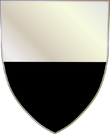 Siena SienaSiena Siena is a city in Tuscany, Italy. It is the capital of the province of Siena.The historic centre of Siena has been declared by UNESCO a World Heritage Site. It is one of the nation's most visited tourist attractions, with over 163,000 international arrivals in 2008... |
| 1380 | 1380 | Battle of Kulikovo Battle of Kulikovo The Battle of Kulikovo was a battle between Tatar Mamai and Muscovy Dmitriy and portrayed by Russian historiography as a stand-off between Russians and the Golden Horde. However, the political situation at the time was much more complicated and concerned the politics of the Northeastern Rus'... |
 Grand Duchy of Moscow Grand Duchy of MoscowGrand Duchy of Moscow The Grand Duchy of Moscow or Grand Principality of Moscow, also known in English simply as Muscovy , was a late medieval Rus' principality centered on Moscow, and the predecessor state of the early modern Tsardom of Russia.... Principality of Beloozero Principality of Rostov Rostov Rostov is a town in Yaroslavl Oblast, Russia, one of the oldest in the country and a tourist center of the Golden Ring. It is located on the shores of Lake Nero, northeast of Moscow. Population:...  Principality of Yaroslavl Principality of YaroslavlPrincipality of Yaroslavl The Principality of Yaroslavl was an eastern Slavic principality, which existed in 1218—1463.Its first independent prince was Vsyevolod Konstantinovich, who died fighting the Mongols on the Siti river, March 4th 1238. Yaroslavl had been sacked in February...  Principality of Suzdal—Nizhny Novgorod Principality of Suzdal—Nizhny NovgorodPrincipality of Suzdal—Nizhny Novgorod The Principality of Suzdal—Nizhny Novgorod was an East Slavic principality, which formed in 1341. Its main towns were Suzdal, Nizhny Novgorod, Gorokhovets, Gorodets and Kurmysh. Since 1350 Nizhny Novgorod has been the capital of the principality.... Principality of Murom Principality of Murom The Principality of Murom was a medieval Rus' lordship based on the city of Murom, now in Vladimir Oblast, Russia. Murom lay in an area that was strongly Finno-Ugric for much of its medieval history, located in the homeland of the Muromians... |
The Golden Horde |
| 1383 | 1385 | 1383–1385 Crisis 1383–1385 Crisis The 1383–1385 Crisis was a period of civil war in Portuguese history that began with the death of King Ferdinand I of Portugal, who left no male heirs, and ended with the accession to the throne of King John I in 1385, in the wake of the Battle of Aljubarrota.In Portugal, this period is also known... |
.svg.png) Kingdom of Portugal Kingdom of PortugalKingdom of Portugal The Kingdom of Portugal was Portugal's general designation under the monarchy. The kingdom was located in the west of the Iberian Peninsula, Europe and existed from 1139 to 1910...  Kingdom of England Kingdom of England |
 Crown of Castille Crown of Castille |
| 1380s | Early 1390s | Tokhtamysh–Timur war |  Timurid Dynasty Timurid DynastyTimurid Dynasty The Timurids , self-designated Gurkānī , were a Persianate, Central Asian Sunni Muslim dynasty of Turko-Mongol descent whose empire included the whole of Iran, modern Afghanistan, and modern Uzbekistan, as well as large parts of contemporary Pakistan, North India, Mesopotamia, Anatolia and the... |
The Golden Horde |
| 1385 | 1424 | Forty Years' War Forty Years' War The Forty Years' War was a military conflict fought between the Burmese-speaking Kingdom of Ava and the Mon-speaking Kingdom of Hanthawaddy Pegu. The war was fought during two separate periods: 1385 to 1391 and 1404 to 1424, interrupted by two truces of 1391–1404 and 1406–1407... |
Peace between: Kingdom of Ava Ava Kingdom The Ava Kingdom was the dominant kingdom that ruled upper Burma from 1364 to 1555. Founded in 1364, the kingdom was the successor state to the petty kingdoms that had ruled central Burma since the collapse of Pagan Empire in the late 13th century... |
and Kingdom of Hanthawaddy Hanthawaddy Kingdom The Hanthawaddy Kingdom was the dominant kingdom that ruled lower Burma from 1287 to 1539. The Mon-speaking kingdom was founded as Ramannadesa by King Wareru following the collapse of the Pagan Empire in 1287 as a nominal vassal state of Sukhothai Kingdom, and of the Mongol Yuan dynasty... |
| 1386 | 1404 | Timur's invasions of Georgia Timur's invasions of Georgia Georgia, a Christian kingdom in the Caucasus, was subjected, between 1386 and 1404, to several disastrous invasions by the Islamic armies of Turco-Mongol conqueror Timur, whose vast empire stretched, at its greatest extent, from Central Asia into Anatolia.These conflicts were intimately linked with... |
 Timurid Dynasty Timurid DynastyTimurid Dynasty The Timurids , self-designated Gurkānī , were a Persianate, Central Asian Sunni Muslim dynasty of Turko-Mongol descent whose empire included the whole of Iran, modern Afghanistan, and modern Uzbekistan, as well as large parts of contemporary Pakistan, North India, Mesopotamia, Anatolia and the... |
Kingdom of Georgia Kingdom of Georgia The Kingdom of Georgia was a medieval monarchy established in AD 978 by Bagrat III.It flourished during the 11th and 12th centuries, the so-called "golden age" of the history of Georgia. It fell to the Mongol invasions of the 13th century, but managed to re-assert sovereignty by 1327... |
1400-1499
| Start | Finish | Name of Conflict | Belligerents | |
|---|---|---|---|---|
| Victorious party (if applicable) | Defeated party (if applicable) | |||
| 1402 | 1402 | Battle of Ankara Battle of Ankara The Battle of Ankara or Battle of Angora, fought on July 20, 1402, took place at the field of Çubuk between the forces of the Ottoman sultan Bayezid I and the Turko-Mongol forces of Timur, ruler of the Timurid Empire. The battle was a major victory for Timur, and it led to a period of crisis for... |
 Timurid Empire Timurid Empire |
 Ottoman Empire Ottoman EmpireMoravian Serbia Moravian Serbia The Moravian Serbia was one of the states that emerged from the collapse of the Serbian Empire in the 14th century. The state was created through political and military activities of its first ruler Prince Lazar Hrebeljanović, who later fought and perished at the Battle of Kosovo.-History:Lazar... |
| 1407 | 1427 | Fourth Chinese domination | 大明 Ming Dynasty Ming Dynasty The Ming Dynasty, also Empire of the Great Ming, was the ruling dynasty of China from 1368 to 1644, following the collapse of the Mongol-led Yuan Dynasty. The Ming, "one of the greatest eras of orderly government and social stability in human history", was the last dynasty in China ruled by ethnic... |
胡朝 Hồ Dynasty |
| 1409 | 1411 | Polish–Lithuanian–Teutonic War | Kingdom of Poland Grand Duchy of Lithuania Grand Duchy of Lithuania The Grand Duchy of Lithuania was a European state from the 12th /13th century until 1569 and then as a constituent part of Polish-Lithuanian Commonwealth until 1791 when Constitution of May 3, 1791 abolished it in favor of unitary state. It was founded by the Lithuanians, one of the polytheistic... |
 Teutonic Knights Teutonic KnightsTeutonic Knights The Order of Brothers of the German House of Saint Mary in Jerusalem , commonly the Teutonic Order , is a German medieval military order, in modern times a purely religious Catholic order... |
| 1410 or 1411 | 1410 or 1411 | Ming–Kotte War | 大明 Ming Dynasty Ming Dynasty The Ming Dynasty, also Empire of the Great Ming, was the ruling dynasty of China from 1368 to 1644, following the collapse of the Mongol-led Yuan Dynasty. The Ming, "one of the greatest eras of orderly government and social stability in human history", was the last dynasty in China ruled by ethnic... |
 Kingdom of Kotte Kingdom of KotteKingdom of Kotte The Kingdom of Kotte , centred on Sri Jayawardanapura Kotte was a kingdom that flourished in Sri Lanka during the 15th century. Its king was the last native sovereign to unify all of Sri Lanka under one rule. -Etymology:The term Kotte means fortress in Sinhalese... |
| 1414 | 1414 | Hunger War |  Kingdom of Poland Kingdom of Poland Grand Duchy of Lithuania Grand Duchy of LithuaniaGrand Duchy of Lithuania The Grand Duchy of Lithuania was a European state from the 12th /13th century until 1569 and then as a constituent part of Polish-Lithuanian Commonwealth until 1791 when Constitution of May 3, 1791 abolished it in favor of unitary state. It was founded by the Lithuanians, one of the polytheistic... |
 Teutonic Order and mercenaries Teutonic Order and mercenaries |
| 1419 | 1419 | Ōei Invasion Oei Invasion The , known as the Gihae Eastern Expedition in Korea, was the 1419 military expedition from Joseon against pirate bases on Tsushima Island, which is located in the middle of the Korea Strait between the Korean Peninsula and Kyushu.... |
 Joseon Dynasty Joseon DynastyJoseon Dynasty Joseon , was a Korean state founded by Taejo Yi Seong-gye that lasted for approximately five centuries. It was founded in the aftermath of the overthrow of the Goryeo at what is today the city of Kaesong. Early on, Korea was retitled and the capital was relocated to modern-day Seoul... |
 Sō clan Sō clanSo clan The Sō were a Japanese clan claiming descent from Taira Tomomori. The clan governed and held Tsushima Island from the 13th-century through the late 19th-century, from the Kamakura period until the end of the Edo period and the Meiji restoration.... |
| 1419 | 1434 | Hussite Wars Hussite Wars The Hussite Wars, also called the Bohemian Wars involved the military actions against and amongst the followers of Jan Hus in Bohemia in the period 1419 to circa 1434. The Hussite Wars were notable for the extensive use of early hand-held gunpowder weapons such as hand cannons... |
 Holy Roman Empire Holy Roman Empire Royalists .svg.png) Hungary HungaryHungary Hungary , officially the Republic of Hungary , is a landlocked country in Central Europe. It is situated in the Carpathian Basin and is bordered by Slovakia to the north, Ukraine and Romania to the east, Serbia and Croatia to the south, Slovenia to the southwest and Austria to the west. The... .svg.png) Pope PopePope The Pope is the Bishop of Rome, a position that makes him the leader of the worldwide Catholic Church . In the Catholic Church, the Pope is regarded as the successor of Saint Peter, the Apostle... moderated Hussites (Utraquists Utraquism Utraquism was a Christian dogma first proposed by Jacob of Mies in 1414. It maintained that the Eucharist should be administered "in both kinds" — as both bread and wine — to all the congregation, including the laity... ) Serbian Serbs The Serbs are a South Slavic ethnic group of the Balkans and southern Central Europe. Serbs are located mainly in Serbia, Montenegro and Bosnia and Herzegovina, and form a sizable minority in Croatia, the Republic of Macedonia and Slovenia. Likewise, Serbs are an officially recognized minority in... mercenaries |
Hussites 1419-1423 , Radical Hussites (Taborites and Orebites Orebites Orebites were followers of the Hussites in Eastern Bohemia. The founders took part in the procession on the Mount Oreb near Třebechovice pod Orebem. Later most of the noble supporters belonged to the East Bohemian church known as the Bohemian Brethren. The ideological founder of the Orebites... ) 1423-1434 |
| 1422 | 1422 | Siege of Constantinople (1422) Siege of Constantinople (1422) The first full-scale Ottoman Siege of Constantinople took place in 1422 as a result of the Byzantine Emperor Manuel II's attempts to interfere in the succession of Ottoman Sultans, after the death of Mehmed I in 1421... |
 Byzantine Empire Byzantine Empire |
 Ottoman Empire Ottoman Empire |
| 1422 | 1422 | Gollub War Gollub War The Gollub War was a two-month war of the Teutonic Knights against the Kingdom of Poland and the Grand Duchy of Lithuania in 1422. It ended by signing the Treaty of Melno, which resolved territorial disputes, dragging since 1398, between the Knights and Lithuania over Samogitia.-Background:The... |
 Kingdom of Poland Kingdom of Poland Grand Duchy of Lithuania Grand Duchy of LithuaniaGrand Duchy of Lithuania The Grand Duchy of Lithuania was a European state from the 12th /13th century until 1569 and then as a constituent part of Polish-Lithuanian Commonwealth until 1791 when Constitution of May 3, 1791 abolished it in favor of unitary state. It was founded by the Lithuanians, one of the polytheistic...  Principality of Moldavia Principality of MoldaviaMoldavia Moldavia is a geographic and historical region and former principality in Eastern Europe, corresponding to the territory between the Eastern Carpathians and the Dniester river... |
 Teutonic Order and mercenaries and various knights from the rest of Europe Teutonic Order and mercenaries and various knights from the rest of Europe |
| 1425 | 1454 | Wars in Lombardy Wars in Lombardy The wars in Lombardy were a series of conflicts fought in central-northern Italy between the Republic of Venice and the Duchy of Milan, and their different allies. They lasted from 1425 until the signing of the Treaty of Lodi in 1454... |
 Duchy of Milan Duchy of MilanDuchy of Milan The Duchy of Milan , was created on the 1st of may 1395, when Gian Galeazzo Visconti, Lord of Milan, purchased a diploma for 100,000 Florins from King Wenceslaus. It was this diploma that installed, Gian Galeazzo as Duke of Milan and Count of Pavia... |
 Republic of Venice Republic of VeniceRepublic of Venice The Republic of Venice or Venetian Republic was a state originating from the city of Venice in Northeastern Italy. It existed for over a millennium, from the late 7th century until 1797. It was formally known as the Most Serene Republic of Venice and is often referred to as La Serenissima, in... |
| 1431 | 1435 | Polish–Teutonic War (1431–1435) Polish–Teutonic War (1431–1435) The Lithuanian Civil War of 1431–1435 was a conflict over the succession to the throne of the Grand Duchy of Lithuania, after Vytautas the Great died in 1430 without leaving an heir. The war was fought on the one side by Švitrigaila, allied with the Teutonic Knights, and on the other by Sigismund... |
Kingdom of Poland Kingdom of Poland (1385–1569) The Kingdom of Poland of the Jagiellons was the Polish state created by the accession of Jogaila , Grand Duke of Lithuania, to the Polish throne in 1386. The Union of Krewo or Krėva Act, united Poland and Lithuania under the rule of a single monarch... |
 Teutonic Order Teutonic Order |
| 1431 | 1435 | Lithuanian Civil War (1431–1435) |  Western Grand Duchy of Lithuania Western Grand Duchy of LithuaniaGrand Duchy of Lithuania The Grand Duchy of Lithuania was a European state from the 12th /13th century until 1569 and then as a constituent part of Polish-Lithuanian Commonwealth until 1791 when Constitution of May 3, 1791 abolished it in favor of unitary state. It was founded by the Lithuanians, one of the polytheistic... (Samogitian Eldership, Trakai Voivodeship Trakai Voivodeship Trakai Voivodeship, Trakai Palatinate, or Troki Voivodeship , was a unit of administrative division and local government in the Grand Duchy of Lithuania from 1413 until 1795.-History:... , Vilnius Voivodeship Vilnius Voivodeship The Vilnius Voivodeship was one of voivodeships in the Grand Duchy of Lithuania, created in 1413, from the Duchy of Lithuania and neighbouring lands.- Geography and administrative division :... , Podlasie) Kingdom of Poland Kingdom of Poland (1385–1569) The Kingdom of Poland of the Jagiellons was the Polish state created by the accession of Jogaila , Grand Duke of Lithuania, to the Polish throne in 1386. The Union of Krewo or Krėva Act, united Poland and Lithuania under the rule of a single monarch... Hussite Hussite The Hussites were a Christian movement following the teachings of Czech reformer Jan Hus , who became one of the forerunners of the Protestant Reformation... s |
 Eastern Grand Duchy of Lithuania Eastern Grand Duchy of LithuaniaGrand Duchy of Lithuania The Grand Duchy of Lithuania was a European state from the 12th /13th century until 1569 and then as a constituent part of Polish-Lithuanian Commonwealth until 1791 when Constitution of May 3, 1791 abolished it in favor of unitary state. It was founded by the Lithuanians, one of the polytheistic... (Polotsk, Vitebsk Vitebsk Vitebsk, also known as Viciebsk or Vitsyebsk , is a city in Belarus, near the border with Russia. The capital of the Vitebsk Oblast, in 2004 it had 342,381 inhabitants, making it the country's fourth largest city... , Smolensk Smolensk Smolensk is a city and the administrative center of Smolensk Oblast, Russia, located on the Dnieper River. Situated west-southwest of Moscow, this walled city was destroyed several times throughout its long history since it was on the invasion routes of both Napoleon and Hitler. Today, Smolensk... , Kiev Kiev Kiev or Kyiv is the capital and the largest city of Ukraine, located in the north central part of the country on the Dnieper River. The population as of the 2001 census was 2,611,300. However, higher numbers have been cited in the press.... , Volhynia Volhynia Volhynia, Volynia, or Volyn is a historic region in western Ukraine located between the rivers Prypiat and Southern Bug River, to the north of Galicia and Podolia; the region is named for the former city of Volyn or Velyn, said to have been located on the Southern Bug River, whose name may come... )  Teutonic Knights Teutonic KnightsTeutonic Knights The Order of Brothers of the German House of Saint Mary in Jerusalem , commonly the Teutonic Order , is a German medieval military order, in modern times a purely religious Catholic order...  Livonian Order Livonian OrderLivonian Order The Livonian Order was an autonomous Livonian branch of the Teutonic Order and a member of the Livonian Confederation from 1435–1561. After being defeated by Samogitians in the 1236 Battle of Schaulen , the remnants of the Livonian Brothers of the Sword were incorporated into the Teutonic Knights... Golden Horde Golden Horde The Golden Horde was a Mongol and later Turkicized khanate that formed the north-western sector of the Mongol Empire... |
| 1444 | 1444 | Battle of Torvioll Battle of Torvioll The battle of Torvioll, also known as the battle of Lower Dibra, was fought on June 29 of 1444 in Albania. Skanderbeg was an Ottoman captain of Albanian origin who decided to go back to his native land and take the reins of a new Albanian rebellion... |
League of Lezhë League of Lezhë The League of Lezhë was an alliance of Albanian Principalities forged in Lezhë on the 2nd of March 1444. It was initiated and organised by Skanderbeg with the aim of uniting the Albanian principalities that had been founded in the 12th - 14th centuries, to fight the Ottoman Armies... |
.svg.png) Ottoman Empire Ottoman EmpireOttoman Empire The Ottoman EmpireIt was usually referred to as the "Ottoman Empire", the "Turkish Empire", the "Ottoman Caliphate" or more commonly "Turkey" by its contemporaries... |
| 1453 | 1453 | Fall of Constantinople Fall of Constantinople The Fall of Constantinople was the capture of the capital of the Byzantine Empire, which occurred after a siege by the Ottoman Empire, under the command of Ottoman Sultan Mehmed II, against the defending army commanded by Byzantine Emperor Constantine XI... |
 Ottoman Empire Ottoman Empire |
 Byzantine Empire Byzantine Empire Republic of Genoa Republic of Genoa |
| 1454 | 1466 | Thirteen Years' War (1454–66) |  Prussian Confederation Prussian ConfederationPrussian Confederation The Prussian Confederation was an organization formed in 1440 by a group of 53 gentry and clergy and 19 cities in Prussia to oppose the monastic state of the Teutonic Knights. It was based on the basis of an earlier similar organization, the Lizard Union... Kingdom of Poland Kingdom of Poland (1385–1569) The Kingdom of Poland of the Jagiellons was the Polish state created by the accession of Jogaila , Grand Duke of Lithuania, to the Polish throne in 1386. The Union of Krewo or Krėva Act, united Poland and Lithuania under the rule of a single monarch... |
 Teutonic State Teutonic State |
| 1455 | 1485 | Wars of the Roses Wars of the Roses The Wars of the Roses were a series of dynastic civil wars for the throne of England fought between supporters of two rival branches of the royal House of Plantagenet: the houses of Lancaster and York... |
 House of Lancaster House of LancasterHouse of Lancaster The House of Lancaster was a branch of the royal House of Plantagenet. It was one of the opposing factions involved in the Wars of the Roses, an intermittent civil war which affected England and Wales during the 15th century... |
 House of York House of YorkHouse of York The House of York was a branch of the English royal House of Plantagenet, three members of which became English kings in the late 15th century. The House of York was descended in the paternal line from Edmund of Langley, 1st Duke of York, the fourth surviving son of Edward III, but also represented... |
| 1456 | 1456 | Siege of Belgrade |  Kingdom of Hungary Kingdom of HungaryKingdom of Hungary The Kingdom of Hungary comprised present-day Hungary, Slovakia and Croatia , Transylvania , Carpatho Ruthenia , Vojvodina , Burgenland , and other smaller territories surrounding present-day Hungary's borders... Serbs Serbs The Serbs are a South Slavic ethnic group of the Balkans and southern Central Europe. Serbs are located mainly in Serbia, Montenegro and Bosnia and Herzegovina, and form a sizable minority in Croatia, the Republic of Macedonia and Slovenia. Likewise, Serbs are an officially recognized minority in... Europe Europe Europe is, by convention, one of the world's seven continents. Comprising the westernmost peninsula of Eurasia, Europe is generally 'divided' from Asia to its east by the watershed divides of the Ural and Caucasus Mountains, the Ural River, the Caspian and Black Seas, and the waterways connecting... an Crusaders Crusaders The Crusaders are a New Zealand professional rugby union team based in Christchurch that competes in the Super Rugby competition. They are the most successful team in Super Rugby history with seven titles... |
.svg.png) Ottoman Empire Ottoman EmpireOttoman Empire The Ottoman EmpireIt was usually referred to as the "Ottoman Empire", the "Turkish Empire", the "Ottoman Caliphate" or more commonly "Turkey" by its contemporaries... |
| 1462 | 1462 | The Night Attack The Night Attack The Night Attack of Târgovişte was a skirmish fought between forces of Vlad III the Impaler of Wallachia and Mehmed II of the Ottoman Empire on Thursday, June 17, 1462. The conflict initially started with Vlad's refusal to pay the Jizya to the Sultan and intensified when Vlad Ţepeş invaded... |
 Wallachia WallachiaWallachia Wallachia or Walachia is a historical and geographical region of Romania. It is situated north of the Danube and south of the Southern Carpathians... |
.svg.png) Ottoman Empire Ottoman EmpireOttoman Empire The Ottoman EmpireIt was usually referred to as the "Ottoman Empire", the "Turkish Empire", the "Ottoman Caliphate" or more commonly "Turkey" by its contemporaries... |
| 1467 | 1477 | Ōnin War Onin War The ' was a civil war that lasted 10 years during the Muromachi period in Japan. A dispute between Hosokawa Katsumoto and Yamana Sōzen escalated into a nationwide war involving the Ashikaga shogunate and a number of daimyo in many regions of Japan.... |
||
| 1467 | 1479 | War of the Priests War of the Priests The War of the Priests was a drawn-out dispute with Poland over the independence of the Royal Prussian Prince-Bishopric of Ermland . The Second Treaty of Thorn that had been sealed in 1466 at Toruń affected also the Bishopric of Warmia, which claimed to have received Prince-Bishopric status a... |
||
| 1470 | 1471 | Dano-Swedish War (1470-1471) |  Sweden SwedenSweden Sweden , officially the Kingdom of Sweden , is a Nordic country on the Scandinavian Peninsula in Northern Europe. Sweden borders with Norway and Finland and is connected to Denmark by a bridge-tunnel across the Öresund.... |
 Denmark DenmarkDenmark Denmark is a Scandinavian country in Northern Europe. The countries of Denmark and Greenland, as well as the Faroe Islands, constitute the Kingdom of Denmark . It is the southernmost of the Nordic countries, southwest of Sweden and south of Norway, and bordered to the south by Germany. Denmark... .svg.png) German Knights German KnightsRoyal Prussia Royal Prussia was a Region of the Kingdom of Poland and of the Polish-Lithuanian Commonwealth . Polish Prussia included Pomerelia, Chełmno Land , Malbork Voivodeship , Gdańsk , Toruń , and Elbląg . It is distinguished from Ducal Prussia... |
| 1471 | 1471 | 1471 Vietnamese invasion of Champa 1471 Vietnamese invasion of Champa 1471 Vietnamese invasion of Champa under Emperor Lê Thánh Tông was a military expedition that is widely regarded as marking the downfall of Champa. The Vietnamese forces attacked and sacked the capital Vijaya, and decimated the Cham army... |
Lê Dynasty Lê Dynasty The Later Lê Dynasty , sometimes referred to as the Lê Dynasty was the longest-ruling dynasty of Vietnam, ruling the country from 1428 to 1788, with a brief interruption.... Dai Viet |
Champa Champa The kingdom of Champa was an Indianized kingdom that controlled what is now southern and central Vietnam from approximately the 7th century through to 1832.The Cham people are remnants... |
| 1474 | 1477 | Burgundian Wars Burgundian Wars The Burgundian Wars were a conflict between the Dukes of Burgundy and the Kings of France, later involving the Old Swiss Confederacy, which would play a decisive role. Open war broke out in 1474, and in the following years the Duke of Burgundy, Charles the Bold, was defeated three times on the... |
 Swiss Confederation Swiss ConfederationOld Swiss Confederacy The Old Swiss Confederacy was the precursor of modern-day Switzerland.... |
Duchy of Burgundy Duchy of Burgundy The Duchy of Burgundy , was heir to an ancient and prestigious reputation and a large division of the lands of the Second Kingdom of Burgundy and in its own right was one of the geographically larger ducal territories in the emergence of Early Modern Europe from Medieval Europe.Even in that... |
| 1475 | 1479 | War of the Castilian Succession War of the Castilian Succession The War of the Castilian Succession was the military conflict contested from 1475 to 1479 for the succession of the Crown of Castile fought between the supporters of Juana la Beltraneja, daughter of the late monarch Henry IV of Castile, and those of Henry's half sister, Isabella, who was ultimately... |
 Isabella Supporters Isabella SupportersCrown of Aragon Crown of Aragon The Crown of Aragon Corona d'Aragón Corona d'Aragó Corona Aragonum controlling a large portion of the present-day eastern Spain and southeastern France, as well as some of the major islands and mainland possessions stretching across the Mediterranean as far as Greece... |
 Juana Supporters Juana SupportersKingdom of Portugal Portugal Portugal , officially the Portuguese Republic is a country situated in southwestern Europe on the Iberian Peninsula. Portugal is the westernmost country of Europe, and is bordered by the Atlantic Ocean to the West and South and by Spain to the North and East. The Atlantic archipelagos of the...  Kingdom of France Kingdom of FranceFrance The French Republic , The French Republic , The French Republic , (commonly known as France , is a unitary semi-presidential republic in Western Europe with several overseas territories and islands located on other continents and in the Indian, Pacific, and Atlantic oceans. Metropolitan France... |
| 1480 | 1480 | Siege of Rhodes (1480) Siege of Rhodes (1480) In 1480 the small Knights Hospitaller garrison of Rhodes withstood an attack of the Ottoman Empire.-Preparation:In 1470, the island of Tilos was evacuated to Rhodes because they were susceptible to attacks from the Ottoman Empire... |
Knights Hospitaller Knights Hospitaller The Sovereign Military Hospitaller Order of Saint John of Jerusalem of Rhodes and of Malta , also known as the Sovereign Military Order of Malta , Order of Malta or Knights of Malta, is a Roman Catholic lay religious order, traditionally of military, chivalrous, noble nature. It is the world's... |
Ottoman Empire Ottoman Empire The Ottoman EmpireIt was usually referred to as the "Ottoman Empire", the "Turkish Empire", the "Ottoman Caliphate" or more commonly "Turkey" by its contemporaries... |
| 1482 | 1484 | War of Ferrara |  Republic of Venice Republic of VeniceRepublic of Venice The Republic of Venice or Venetian Republic was a state originating from the city of Venice in Northeastern Italy. It existed for over a millennium, from the late 7th century until 1797. It was formally known as the Most Serene Republic of Venice and is often referred to as La Serenissima, in... .svg.png) Papal States Papal StatesPapal States The Papal State, State of the Church, or Pontifical States were among the major historical states of Italy from roughly the 6th century until the Italian peninsula was unified in 1861 by the Kingdom of Piedmont-Sardinia .The Papal States comprised territories under... |
 Duchy of Ferrara Duchy of FerraraDuchy of Ferrara The Duchy of Ferrara is a former sovereign state of northern Italy.Obizzo II d'Este was proclaimed lifelong ruler of Ferrara in 1264. He also became seignior of nearby Modena in 1288 and of Reggio in 1289...  Kingdom of Naples Kingdom of NaplesKingdom of Naples The Kingdom of Naples, comprising the southern part of the Italian peninsula, was the remainder of the old Kingdom of Sicily after secession of the island of Sicily as a result of the Sicilian Vespers rebellion of 1282. Known to contemporaries as the Kingdom of Sicily, it is dubbed Kingdom of... |
| 1482 | 1492 | Granada War Granada War The Granada War was a series of military campaigns between 1482 and 1492, during the reign of the Catholic Monarchs Isabella I of Castile and Ferdinand II of Aragon, against the Nasrid dynasty's Emirate of Granada... |
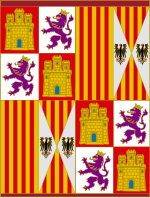 Union of the Crown of Castile Union of the Crown of CastileCrown of Castile The Crown of Castile was a medieval and modern state in the Iberian Peninsula that formed in 1230 as a result of the third and definitive union of the crowns and parliaments of the kingdoms of Castile and León upon the accession of the then King Ferdinand III of Castile to the vacant Leonese throne... and Crown of Aragon Crown of Aragon The Crown of Aragon Corona d'Aragón Corona d'Aragó Corona Aragonum controlling a large portion of the present-day eastern Spain and southeastern France, as well as some of the major islands and mainland possessions stretching across the Mediterranean as far as Greece... |
 Emirate of Granada Emirate of GranadaEmirate of Granada The Emirate of Granada , also known as the Nasrid Kingdom of Granada , was an emirate established in 1238 following the defeat of Muhammad an-Nasir of the Almohad dynasty by an alliance of Christian kingdoms at the Battle of Las Navas de Tolosa in 1212... |
| 1492 | 1494 | First Muscovite–Lithuanian War | Grand Duchy of Moscow Grand Duchy of Moscow The Grand Duchy of Moscow or Grand Principality of Moscow, also known in English simply as Muscovy , was a late medieval Rus' principality centered on Moscow, and the predecessor state of the early modern Tsardom of Russia.... Crimean Khanate Crimean Khanate Crimean Khanate, or Khanate of Crimea , was a state ruled by Crimean Tatars from 1441 to 1783. Its native name was . Its khans were the patrilineal descendants of Toqa Temür, the thirteenth son of Jochi and grandson of Genghis Khan... |
 Grand Duchy of Lithuania Grand Duchy of LithuaniaGrand Duchy of Lithuania The Grand Duchy of Lithuania was a European state from the 12th /13th century until 1569 and then as a constituent part of Polish-Lithuanian Commonwealth until 1791 when Constitution of May 3, 1791 abolished it in favor of unitary state. It was founded by the Lithuanians, one of the polytheistic... Vyazma Vyazma Vyazma is a town and the administrative center of Vyazemsky District of Smolensk Oblast, Russia, located on the Vyazma River, about halfway between Smolensk and Mozhaysk. Throughout its turbulent history, the city defended western approaches to the city of Moscow... |
| 1494 | 1498 | Italian War of 1494–1498 |  Papal States Papal StatesPapal States The Papal State, State of the Church, or Pontifical States were among the major historical states of Italy from roughly the 6th century until the Italian peninsula was unified in 1861 by the Kingdom of Piedmont-Sardinia .The Papal States comprised territories under...  Republic of Venice Republic of Venice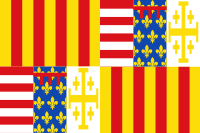 Kingdom of Naples Kingdom of NaplesKingdom of Naples The Kingdom of Naples, comprising the southern part of the Italian peninsula, was the remainder of the old Kingdom of Sicily after secession of the island of Sicily as a result of the Sicilian Vespers rebellion of 1282. Known to contemporaries as the Kingdom of Sicily, it is dubbed Kingdom of... Spain Spain Spain , officially the Kingdom of Spain languages]] under the European Charter for Regional or Minority Languages. In each of these, Spain's official name is as follows:;;;;;;), is a country and member state of the European Union located in southwestern Europe on the Iberian Peninsula... .svg.png) Duchy of Milan Duchy of MilanDuchy of Milan The Duchy of Milan , was created on the 1st of may 1395, when Gian Galeazzo Visconti, Lord of Milan, purchased a diploma for 100,000 Florins from King Wenceslaus. It was this diploma that installed, Gian Galeazzo as Duke of Milan and Count of Pavia...  Holy Roman Empire Holy Roman Empire |
|
| 1495 | 1497 | Russo-Swedish War (1495–1497) | Grand Duchy of Moscow Grand Duchy of Moscow The Grand Duchy of Moscow or Grand Principality of Moscow, also known in English simply as Muscovy , was a late medieval Rus' principality centered on Moscow, and the predecessor state of the early modern Tsardom of Russia.... |
.svg.png) Kingdom of Denmark Kingdom of DenmarkKingdom of Denmark The Kingdom of Denmark or the Danish Realm , is a constitutional monarchy and sovereign state consisting of Denmark proper in northern Europe and two autonomous constituent countries, the Faroe Islands in the North Atlantic and Greenland in North America. Denmark is the hegemonial part, where the...  Kingdom of Denmark Kingdom of DenmarkKingdom of Denmark The Kingdom of Denmark or the Danish Realm , is a constitutional monarchy and sovereign state consisting of Denmark proper in northern Europe and two autonomous constituent countries, the Faroe Islands in the North Atlantic and Greenland in North America. Denmark is the hegemonial part, where the... |
| 1499 | 1504 | Italian War of 1499–1504 | .svg.png) Duchy of Milan Duchy of MilanDuchy of Milan The Duchy of Milan , was created on the 1st of may 1395, when Gian Galeazzo Visconti, Lord of Milan, purchased a diploma for 100,000 Florins from King Wenceslaus. It was this diploma that installed, Gian Galeazzo as Duke of Milan and Count of Pavia...  Kingdom of Naples Kingdom of NaplesKingdom of Naples The Kingdom of Naples, comprising the southern part of the Italian peninsula, was the remainder of the old Kingdom of Sicily after secession of the island of Sicily as a result of the Sicilian Vespers rebellion of 1282. Known to contemporaries as the Kingdom of Sicily, it is dubbed Kingdom of... Spain Spain Spain , officially the Kingdom of Spain languages]] under the European Charter for Regional or Minority Languages. In each of these, Spain's official name is as follows:;;;;;;), is a country and member state of the European Union located in southwestern Europe on the Iberian Peninsula... (after 1501) |
 Republic of Venice Republic of VeniceSpain Spain Spain , officially the Kingdom of Spain languages]] under the European Charter for Regional or Minority Languages. In each of these, Spain's official name is as follows:;;;;;;), is a country and member state of the European Union located in southwestern Europe on the Iberian Peninsula... (until 1501) |
| 1499 | 1499 | Swabian War Swabian War The Swabian War of 1499 was the last major armed conflict between the Old Swiss Confederacy and the House of Habsburg... |
Swiss Confederacy, Three Leagues of the Grisons Three Leagues The Three Leagues was the alliance of 1471 of the League of God's House, the League of the Ten Jurisdictions and the Grey League, leading eventually to the formation of the Swiss canton of Graubünden. Most of the lands of Graubünden were part of the Roman province Raetia in 15 BC... |
Swabian League Swabian League The Swabian League was an association of Imperial States - cities, prelates, principalities and knights - principally in the territory of the Early medieval stem duchy of Swabia, established in 1488 at the behest of Emperor Frederick III of Habsburg and supported as well by Bertold von... , forces of Holy Roman Empire Holy Roman Empire The Holy Roman Empire was a realm that existed from 962 to 1806 in Central Europe.It was ruled by the Holy Roman Emperor. Its character changed during the Middle Ages and the Early Modern period, when the power of the emperor gradually weakened in favour of the princes... |
| 1499 | 1503 | Ottoman–Venetian War (1499–1503) |  Ottoman Empire Ottoman Empire |
 Republic of Venice Republic of Venice Spain SpainHabsburg Spain Habsburg Spain refers to the history of Spain over the 16th and 17th centuries , when Spain was ruled by the major branch of the Habsburg dynasty... |

